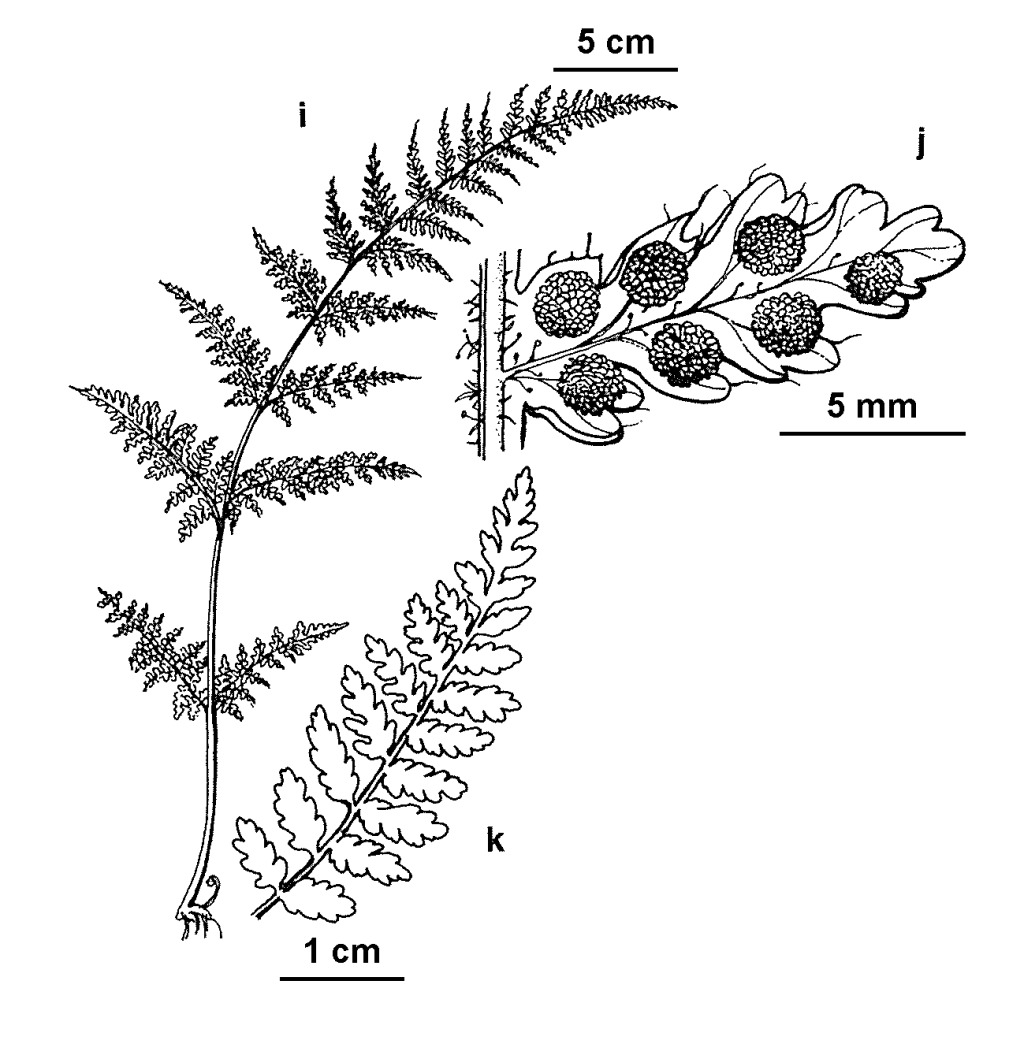Hypolepis amaurorachis
(Kunze) Hook.Rhizome slender, 1.5–3 mm diam., covered by in shiny, red-brown hairs. Fronds 1–5 cm apart, erect, relatively soft, 30–75 cm long. Stipe 1–3 mm diam., dark red-brown tinged with purple, shiny and almost smooth. Lamina 3-pinnate, narrowly triangular, 2–3 times as long as broad, light green to mid-green, dull; hairs on both surfaces fine, colourless, some short and firm, others longer, crooked or almost straight with pointed or glandular tips. Rachises red-brown to orange-brown, lower surfaces smooth to slightly rough; hairs on both surfaces like those on lamina, but also with coarser, crooked hairs having reddish cross-walls, leaving very small tubercles when shed. Pinnules oblong; bases broadly decurrent; margins with rounded lobes, larger lobes blunt and again shallowly lobed; apices rounded; veins single in smaller lobes but forked in the larger. Sori 4–8 on larger pinnules, unprotected or partially protected by reflexed marginal flap which is fringed with a few hairs; spores 32–34 µm long and 20–22 µm diam. Austral Ground-fern.
GipP, CVU, EGL, EGU, HSF, HNF, OtR, HFE, VAlp. Also NSW, Tas. New Zealand. Uncommon throughout its range and rarely forming colonies. Individual plants are found in cool, wet forest, usually on stream banks or in rocky creek beds.
See taxonomic notes under H. rugosula
Entwisle, T.J. (1994). Ferns and allied plants (Psilophyta, Lycopodiophyta, Polypodiophyta). In: Walsh, N.G.; Entwisle, T.J., Flora of Victoria Vol. 2, Ferns and Allied Plants, Conifers and Monocotyledons, pp. 13–111. Inkata Press, Melbourne.
 Spinning
Spinning

